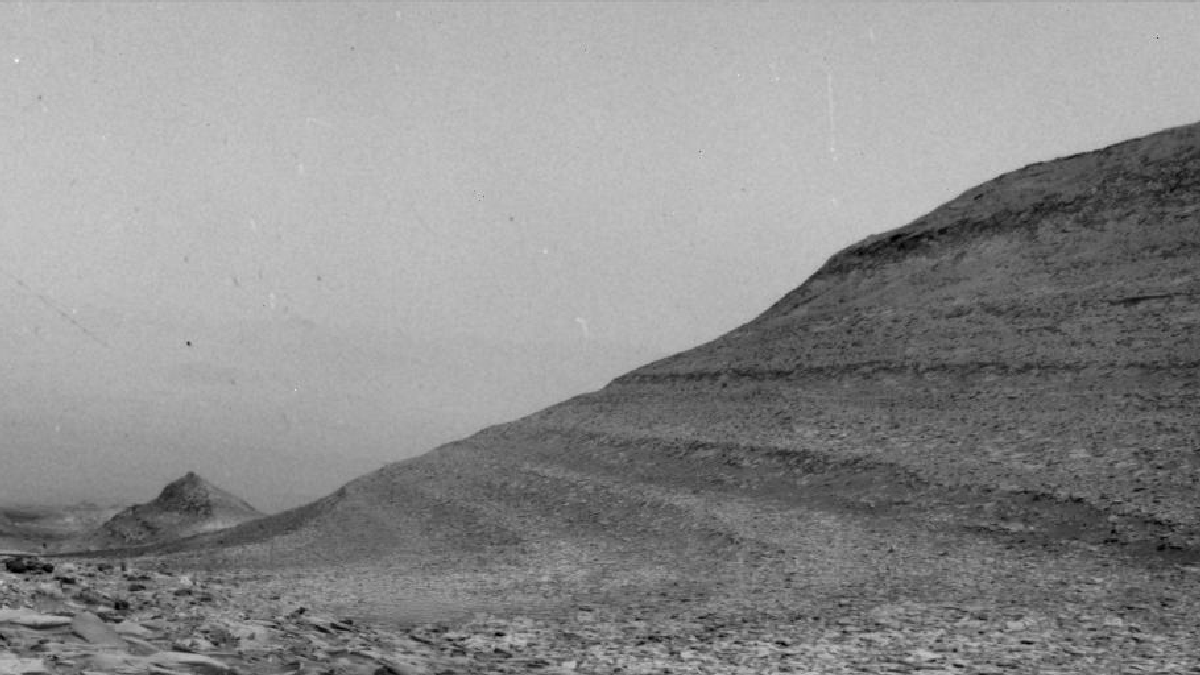
A recent outburst from the Sun sent a strong blast of charged particles and radiation towards Mars, allowing scientists to get a rare glimpse at how these events unfold on planets other than Earth.
NASA’s Curiosity rover captured the aftermath of a solar storm on the Martian surface, using its navigation cameras to record as particles from the Sun rained down on the Red Planet. The Martian robot also measured the largest dose of radiation during its 12 year mission, providing more insight as to how much future astronauts will have to endure on the surface of Mars, according to NASA. At the same time, the space agency’s MAVEN orbiter observed auroras on the far side of Mars, mirroring recent auroral events on Earth.
Advertisement
Over the past month, the Sun has emitted a series of solar flares and coronal mass ejections (CMEs) that have traveled all the way to Mars. On May 20, NASA’s Solar Orbiter recorded a solar flare that was later classified as an X12 (solar flares start at B-class, which are the weakest, all the way up to the strongest, the X-class). The massive solar flare sent X-rays and gamma rays toward the Red Planet, moving at the speed of light, as well as charged particles that were launched by a subsequent CME.
The Moon to Mars Space Weather Analysis Office at NASA’s Goddard Space Flight Center tracked the particles, which arrived at Mars within tens of minutes and appeared as black-and-white streaks and specks in Curiosity’s view of the Martian landscape.
Advertisement
“Recently, my routine dust monitoring coincided with a major solar event hitting the Red Planet, and the charged particles that hit my camera caused distortions,” the Curiosity rover wrote on X.
Advertisement
The rover’s Radiation Assessment Detector, or RAD, was used to measure the amount of radiation that reached Mars, detecting its largest surge yet. For an astronaut standing on the surface of Mars, they would have received a radiation dose of 8,100 micrograys, or the equivalent of 30 chest X-rays, according to NASA.
This data is especially important as NASA looks to land astronauts on Mars in the 2030’s. “Cliffsides or lava tubes would provide additional shielding for an astronaut from such an event,” Don Hassler, RAD’s principal investigator, said in a statement. “In Mars orbit or deep space, the dose rate would be significantly more.”
Advertisement
The Sun goes through an 11-year cycle of fluctuating activity and we are currently coming up on the solar maximum of cycle 25. As a result, the Sun has been exhibiting a rise in the number of sunspots, solar flares, and CMEs. Earth endured its own solar storm between May 10 to 12, which led to disruptions in the power grid and radio blackouts, among other technologies and infrastructure. It also resulted in beautifully colorful auroras across the night skies around much of the world.
Mars had its own set of auroras appear in the skies above the Red Planet during the most recent solar storm. NASA’s MAVEN (Mars Atmosphere and Volatile EvolutioN) orbiter sensed the glowing lights over the planet using its Solar Energetic Particle instrument.
Advertisement
“This was the largest solar energetic particle event that MAVEN has ever seen,” Christina Lee, MAVEN space weather lead, said in a statement. “There have been several solar events in past weeks, so we were seeing wave after wave of particles hitting Mars.”
For more spaceflight in your life, follow us on X and bookmark Gizmodo’s dedicated Spaceflight page.
Services Marketplace – Listings, Bookings & Reviews